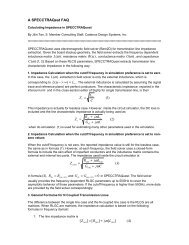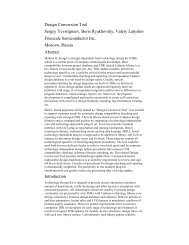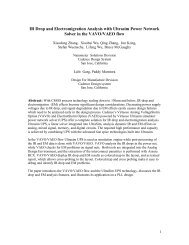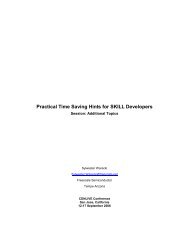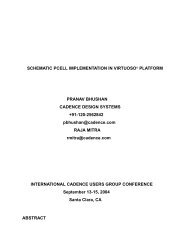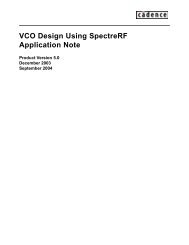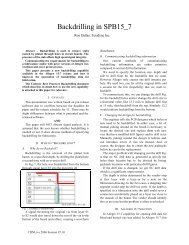Specman Based Verification Methodology for ... - CiteSeerX
Specman Based Verification Methodology for ... - CiteSeerX
Specman Based Verification Methodology for ... - CiteSeerX
Create successful ePaper yourself
Turn your PDF publications into a flip-book with our unique Google optimized e-Paper software.
‣ Checkers:This unit per<strong>for</strong>ms data and temporal (timing) checks which are explained below indetail.• Data Check:To per<strong>for</strong>m data checks the memory output needs to be compared with expectedoutput. The expected output is obtained using scoreboard technique.Scoreboarding is a common verification technique and not e-specific. Here wehave built a reference memory which behaves exactly as per the specification.Any operation per<strong>for</strong>med on the memory under test, is per<strong>for</strong>med on the referencememory also and the output of this reference memory is compared with thememory under test outputREFERNCEMEMORYoutputSeqDriverBFMCompareinputMEMORYUNDER TESToutputFig 4: Reference MemoryTo build a reference memory we need to allocate a static array, but this willconsume huge system memory. To avoid this we are using a dynamically createdkeyed list. When a write operation is per<strong>for</strong>med on the memory under test, theaddress accessed is added to keyed list. When a particular address location iscorrupted due to, say a timing violation then that address location is removedfrom the list.• Temporal Check:These checks involve path delay checks. In the case of memory there are accesstime checks and handshake signal timing checks. To per<strong>for</strong>m these checks thesame timing in<strong>for</strong>mation which is present in the memory under test, is provided tothe eVC. The monitor is asked to emit an event when there is a change in any ofthe signals involved in these paths. The timings of these events are noted and thencompared with the expected timings.7



